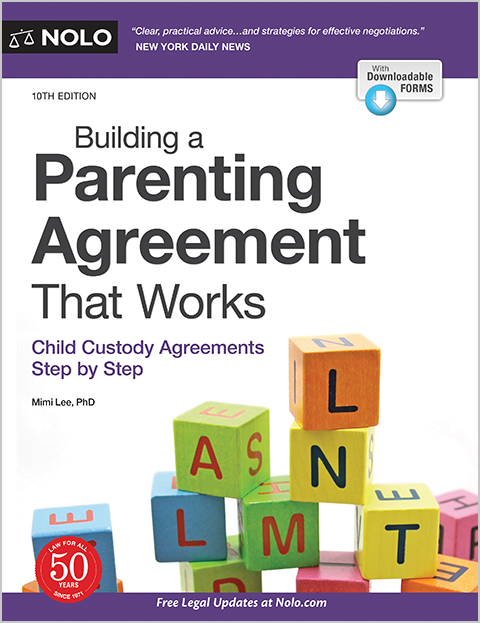Alimony can be a key issue in divorce, but it's not one-size-fits-all—learn how courts decide support, when it can change, and why settling out of court might be your smartest move.
Alimony isn't ordered in every divorce, but it's not uncommon - especially when one spouse has been financially dependent on the other.
If you're facing a divorce involving a request for alimony, you'll want to understand:
- what alimony (also called "spousal support" or "maintenance") is
- how judges made decisions about alimony
- when you can change or stop alimony payments, and
- how you and your spouse can reach an agreement on alimony rather than having a judge decide for you.
What Is Alimony?
Alimony is one spouse's payment to the other—under a court order or the couple's agreement—after divorce or while a divorce case is happening. States use different terms for alimony, such as spousal support and maintenance. State laws on alimony also determine how judges decide when to award spousal support, how much to award, and for how long.
Alimony isn't a way of equalizing a divorced couple's financial situation. Instead, it's meant to ensure that both spouses are able to meet their financial needs.
Spousal support may be ordered for either party to a marriage. The vast majority of states have changed their divorce laws to be gender-neutral. Alimony is also available in same-sex divorces just as in divorces between husbands and wives.
There are basically three types of alimony (although a few states have additional variations):
- temporary alimony that lasts only until the divorce is final
- rehabilitative support that's meant to help the recipients make the transition to supporting themselves, and
- permanent spousal support that's ordered as part of the final divorce judgment.
Permanent does not indicate that the support payments will last for the rest of the recipient's life. Instead, it means that the order itself, though it's likely for a limited duration, is permanent.
How Does Alimony Work?
Usually, alimony payments are periodic, with a certain amount paid every month. Sometimes, a judge will order a spouse to pay a lump sum to the other spouse for maintenance, either in cash or in a property transfer (separate from the regular process of dividing the couple's marital property).
Lump-sum alimony awards can't be undone. But you may usually ask the court to change or end periodic alimony payments, unless the original court order (or agreement) specifically said that they are "nonmodifiable." However, you'll have to convince the judge that modifying or ending maintenance is justified because you or your spouse has had a significant change in circumstances, like a paying spouse's retirement or a supported spouse's new high-paying job.
Some circumstances automatically end periodic alimony, such as when the supported spouse remarries or either spouse dies. Depending on the law in your state, some other circumstances—like when the supported spouse has started living with a partner—may either end alimony or justify reducing the payments when they significantly affect the recipient's need for support.
When you're seeking spousal support, you'll generally request it in your initial paperwork when you file for divorce (or respond to your spouse's petition). If you and your spouse can't reach an agreement about alimony, you'll need to file a formal motion (request) asking a court to make a decision for you. The court will schedule a hearing where both sides will be able to present their positions and evidence. After considering the arguments and evidence, the judge will issue an order.
If there wasn't a request for alimony during the divorce, and it wasn't addressed in the final divorce judgment, neither spouse may go back later and ask the court for spousal support.
How Courts Decide Alimony
State laws set out factors for judges to consider when they're deciding whether to award alimony in any case. States also have laws governing the amount and duration of the payments. These rules are sometimes different for temporary support during the divorce and for post-divorce alimony.
Deciding Whether to Award Post-Divorce Alimony
When judges are deciding whether to order alimony payments after divorce, they generally start out by determining whether one spouse needs support, and whether the other spouse has the ability to pay that support. States have laws highlighting factors for judges to consider when making that decision. Typically, these are the same considerations that go into decisions about the amount of alimony (as discussed below).
The threshold for needing support varies by state. In Texas, for instance, the law presumes that spousal maintenance isn't appropriate outside of certain limited circumstances. Even in long-term marriages, Texans requesting maintenance must show they've seriously tried to earn enough to provide for their reasonable needs.
Considerations When Deciding How Much Spousal Support to Award
Once judges have decided that some amount of alimony is appropriate in a particular case, they must decide how much support to award.
Almost all states spell out a number of factors judges should consider when making these decisions, such as:
- the couple's standard of living during the marriage
- the extent to which each of them could maintain a similar lifestyle after divorce
- each spouse's income and assets
- whether one spouse has a lower earning capacity because that spouse was unemployed for a duration of time while taking care of the family
- contributions either spouse made to the other's training, education, or career advancement, and
- any other factors the judge thinks are fair.
If you're asking for support, the judge will look closely at your current income. If you aren't currently working or aren't earning enough to live on, the judge will consider your ability to earn. If you've been out of the workforce or underemployed for a long time, the judge is more likely to award support for as long as it will take you to become independent. However, you might have to prove you're doing what you can to get to that point, such as taking classes or other training.
Deciding How Long Spousal Support Will Last
Beyond the circumstances that automatically terminate alimony payments (discussed below), some states have separate rules for deciding how long alimony should last. For instance, a state's law might set a time limit on maintenance payments, or it might provide a general guideline—such as half the length of a marriage or no longer than the marriage lasted. But those guidelines may vary depending on whether it was a short or long-term marriage (with 10 years as the typical measure of a long-term marriage).
Otherwise, judges generally consider the same factors when deciding how long alimony should last as they do when deciding on the amount of support. However, they might not set an absolute cut-off date when they make the original maintenance order. Especially when a marriage has lasted a long time and the alimony recipient will need some time to become self-supporting, judges may reserve jurisdiction over the issue—meaning that they retain the legal authority to extend, change or stop maintenance payments in the future.
What About Temporary Spousal Support?
Spouses often need some kind of maintenance payments to help them cover their living expenses while a divorce case is proceeding. Often, the rules for awarding temporary alimony are different than for so-called permanent support. That's partly because while a couple is still married, state laws require spouses to support each other.
To simplify the process of deciding the amount of temporary alimony, some states and local courts use a formula or guideline.
Enforcing an Alimony Award
If your ex isn't paying court-ordered spousal support, you may go back to court to ask the judge to enforce the alimony orders. The same is true when you and your ex had an agreement on the issue that was made part of the final divorce judgment or another court order. Typically, you'll file a motion, and the court will set a hearing to determine why your ex isn't following the order and what the judge should do to enforce it.
Family law courts have various tools at their disposal to enforce alimony payments, and a former spouse could face fines and penalties for failing to follow an alimony order. A judge may also order a spouse to pay alimony retroactively to make up for any missed payments.
Next Steps
If you're considering asking for alimony—or you expect your spouse to—start by gathering your financial records and learning how your state handles spousal support. You may want to talk with a divorce attorney to understand your options. It's also helpful to learn how courts decide alimony, including the factors they consider and how long payments might last. If you're already paying or receiving alimony, you might want to understand how to modify alimony payments when circumstances change. And if your ex has remarried or moved in with a new partner, you can explore whether alimony can be stopped due to remarriage or cohabitation.


